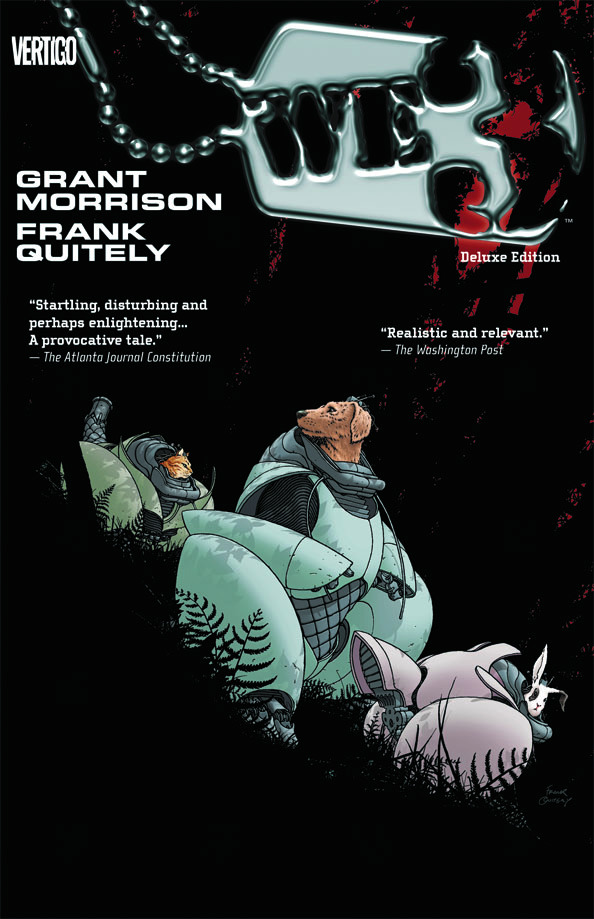Short slick shred

I didn’t know much about Frank Quitely until I went to an exhibition of his work in Glasgow last summer. Given that he’s an artist who works in the top tier of Anglo-American commercial comics this is not surprising: I pay very little attention to the sort of superhero rags he tends to draw, and his inevitable tenure at 2000AD was too brief for me to have noticed him (although I have since caught up on the work he did there). What I discovered at the exhibition is that he’s one of the finest draughtsmen I’ve encountered, and that his formal invention is enough to make even the most hackneyed muscle comic quite fascinating to look at. In that technically polished, commercial world, he’s a frequent collaborator with Grant Morrison, who has written many of my favourite comics (mostly while working for 2000AD), and in 2004 they produced this short original book, perhaps as a testbed for the formal innovations it contains.
Anglo-American comics have a well established grammar, developed through the long years of American mass-production in the twentieth century. There are rules, understood by readers, about the way that time flows from panel to panel, about the narrative implications of a bleed, about the ways that text is associated with image, and so forth. This grammar was described in detail by Scott McCloud in his 1993 non-fiction comic Understanding Comics, and although pictorial stylistics have been subject to considerable innovation, particularly during adult comics’ false start in the 1980s, that grammar has been pretty consistent for decades.
We3 is a short and simple science-fiction tale, about the exploitation of animals for military ends, and it’s a pretty optimistic one, given that some of those animals find some kind of liberty and comfort, although it’s also very gruesome – Morrison and Quitely both do violence with considerable relish and panache. The story is told with considerable efficiency, as I would expect from two master technicians, paced and structured with precision, and seasoned with pleasing details – such as the different speech patterns employed by different species of cybernetically enhanced animals. Quitely’s drawing skills are on point throughout, exploiting his uncanny ability to imagine a scene from any angle (and his grim capacity to imagine any organism dismantled). However, there are some moments where the comic goes beyond just doing the established grammar really well.
Time flows in a predictable way through narrative comics. Its passage can be accelerated or retarded through certain well-established devices, such as varying the size of panels, or breaking up the geometry of a page. Quitely and Morrison find a couple of new ways to represent that flow here. In one, there is a character moving and reacting much faster than others, to the extent that it inhabits a different cognitive space, and this is represented audaciously by twisting the picture plane, so that one set of panels is presented at an angle to the viewer, allowing the fast character to move through them. In another William Burroughs’s cut-up technique is used to arrange a set of identically sized panels showing several simultaneous sequences of action (from CCTV feeds). Doubtless they have exploited the techniques they pioneered here in the many commercial comics they have produced since, but to my ignorant eyes they have a freshness that compensates for the generally conventional aesthetics of the book.
If this was music it would be something akin to shred metal: impactful, technically exacting, audacious, energetic… but so slick and polished that its aesthetics just kind of glide past. I enjoyed this story a lot: I’m sentimental about animals, so it brought a tear (or two) to my eye. I’m not sure I could read a 300 page book in this vein, but for its entertainment value, and for its formal brilliance, I wouldn’t hesitate to recommend We3.
c-g-ricks liked this
oliverarditi posted this